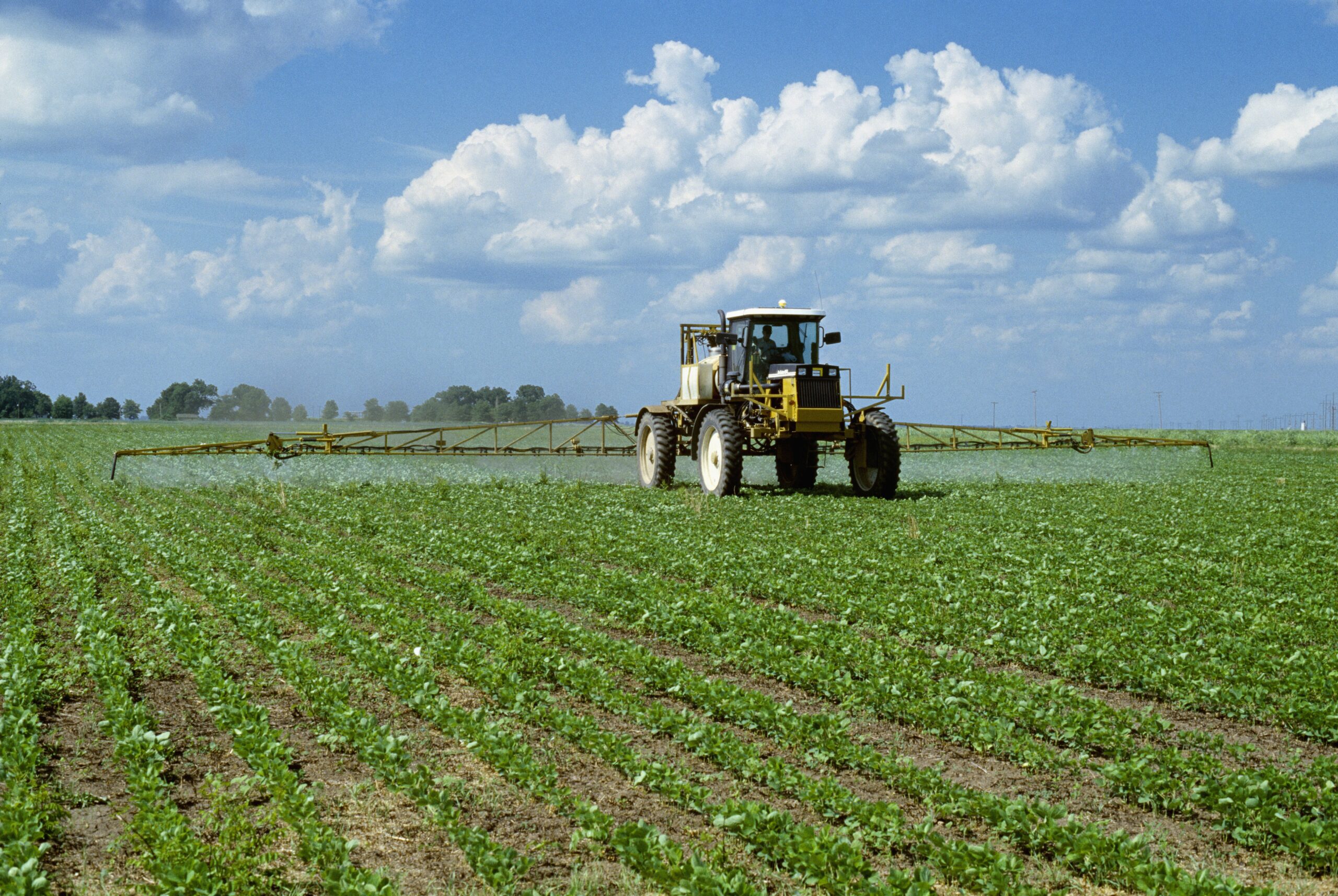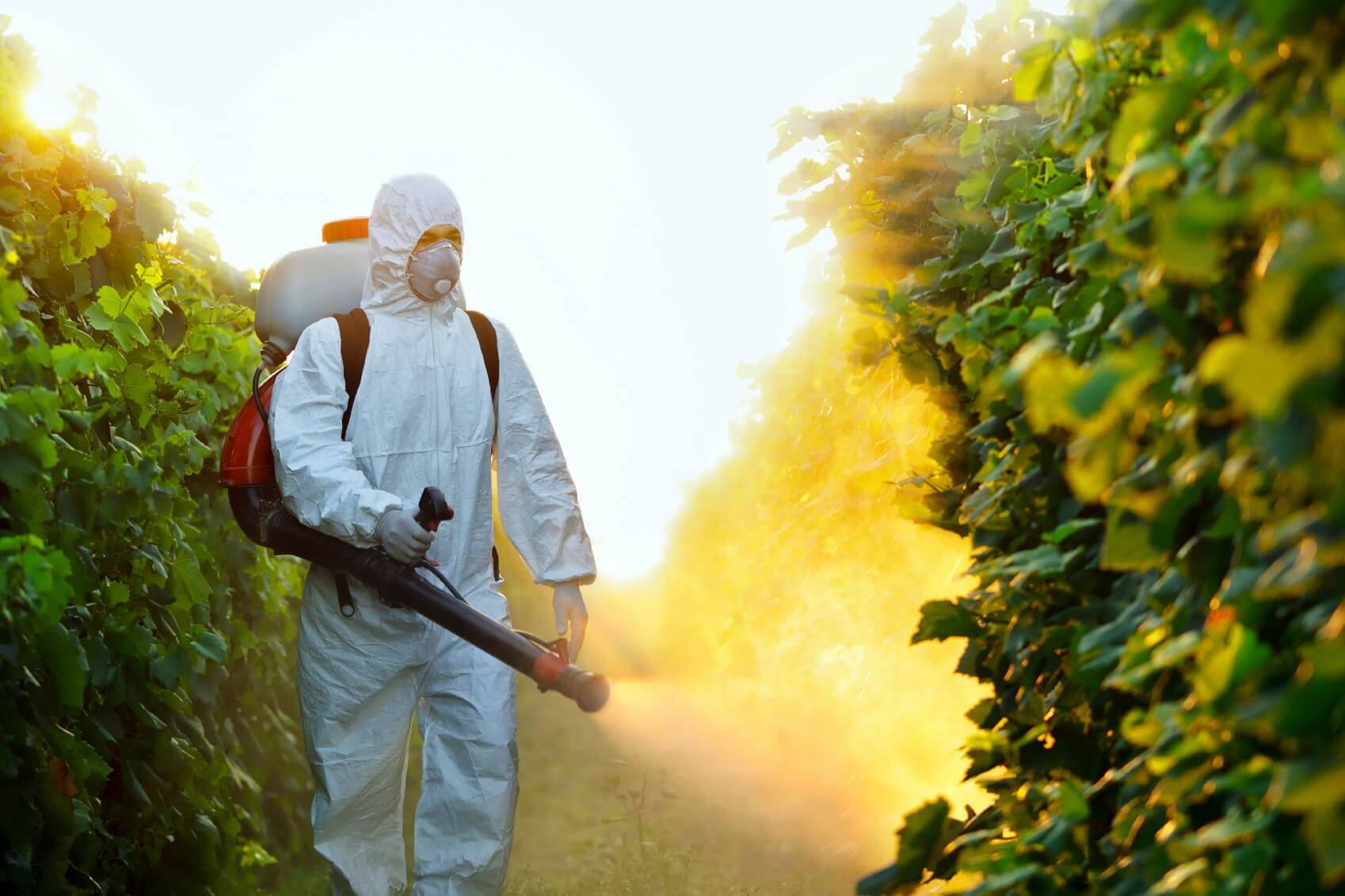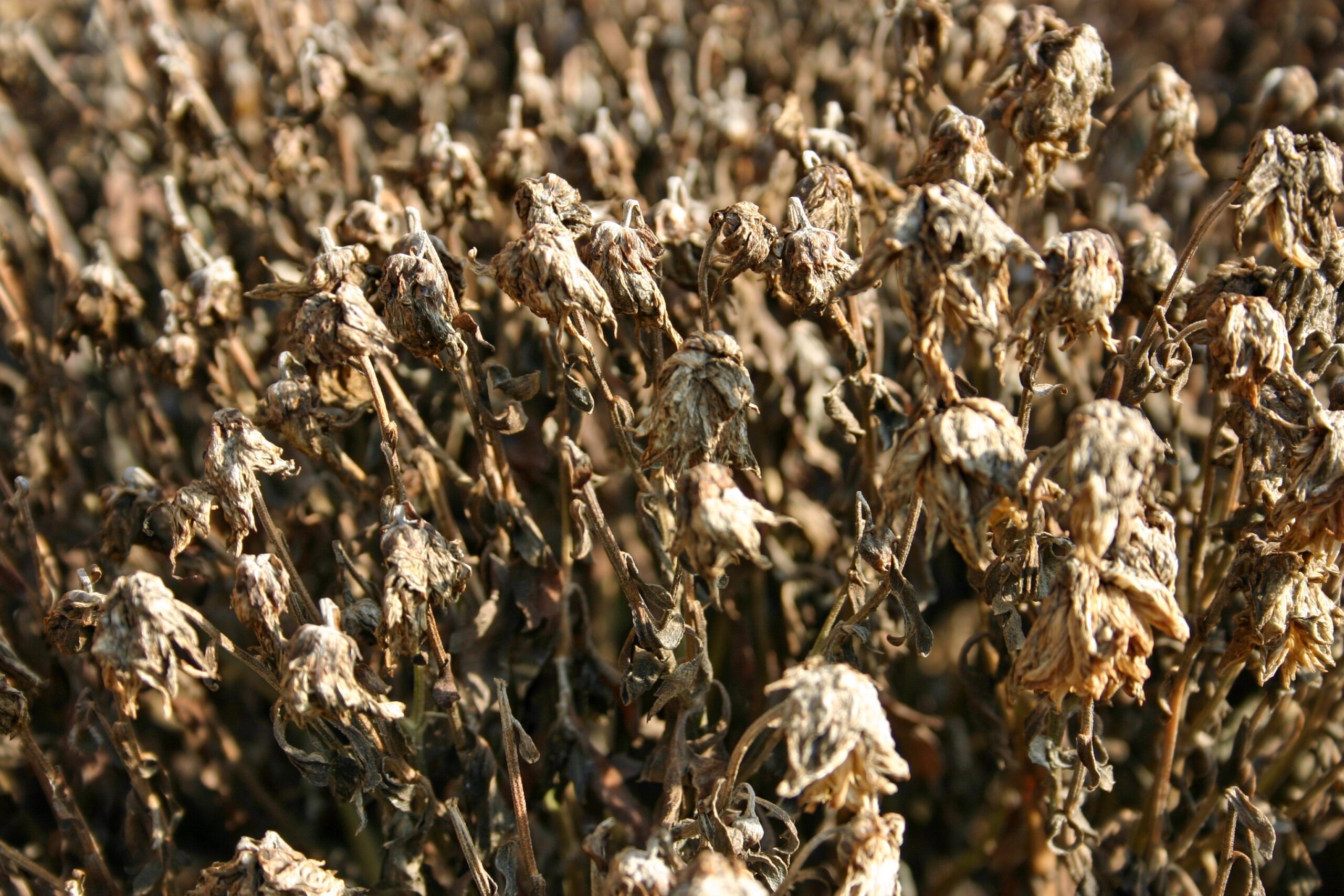(Dr. Mercola) Glyphosate, the active ingredient in Monsanto’s Roundup, is the most heavily used agricultural chemical of all time. In the U.S., over 1.6 billion kilograms of the chemical have been applied since 1974, with researchers stating that, in 2014 alone, farmers sprayed enough glyphosate to apply 0.8 pound per acre on every 2.47 acres of U.S. cultivated cropland along with 0.47 pounds/acre on all cropland globally.1
It’s a mind-boggling amount of usage for one agricultural chemical, and it was only a matter of time before the wide-reaching environmental and public health implications became apparent.
Monsanto advertised Roundup as “biodegradable” and “environmentally friendly,” even going so far as to claim it “left the soil clean” — until they were found guilty of false advertising because the chemical is actually dangerous to the environment.2 It’s also increasingly showing up in people, at alarming levels, with unknown effects on human health.
Study Reveals 1,200 Percent Increase in Glyphosate Levels
Researchers from University of California San Diego (UCSD) School of Medicine tested urine levels of glyphosate and its metabolite aminomethylphosphonic acid (AMPA) among 100 people living in Southern California over a period of 23 years — from 1993 to 2016.3The starting year is noteworthy, because in 1994 genetically engineered (GE) crops were introduced in the U.S.
Glyphosate is used in large quantities on GE glyphosate-tolerant crops (i.e., Roundup Ready varieties), and its use increased nearly fifteenfold since 1996.4 Glyphosate is also a popular tool for desiccating (or accelerating the drying out) of crops like wheat and oats, with the UCSD researchers noting in JAMA that Roundup is “applied as a desiccant to most small non-genetically modified grains.” So for both the GE crops and non-GE grains, glyphosate “is found in these crops at harvest.”
Related: Gluten, Candida, Leaky Gut Syndrome, and Autoimmune Diseases
At the start of the study, Paul Mills, professor of family medicine and public health at the University of California San Diego, stated that very few of the participants had detectable levels of glyphosate in their urine, but by 2016, 70 percent of them did.5 Overall, the prevalence of human exposure to glyphosate increased by 500 percent during the study period while actual levels of the chemical, in ug/ml, increased by a shocking 1,208 percent.6
It’s unknown what this means for human health but, in 2017, separate research revealed that daily exposure to ultra-low levels of glyphosate for two years led to nonalcoholic fatty liver disease (NAFLD) in rats.7 Mills stated that the glyphosate levels revealed by their JAMA study were 100-fold greater than those detected in the rat study.
In response to the featured study, Monsanto was quick to say that the amounts reported “do not raise health concerns,” and that the fact that the chemical is detected in urine is just “one way our bodies get rid of nonessential substances.”8 Speaking to GM Watch, Michael Antoniou of King’s College London had another take on the matter:9
“This is the first study to longitudinally track urine levels of glyphosate over a period before and after the introduction of GM glyphosate-tolerant crops. It is yet another example illustrating that the vast majority of present-day Americans have readily detectable levels of glyphosate in their urine, ranging from 0.3 parts per billion, as in this study, to ten times higher – 3 or more parts per billion – detected by others.
These results are worrying because there is increasing evidence to show that exposure to glyphosate-based herbicides below regulatory safety limits can be harmful.”
While the JAMA study did not look into potential health ramifications of their findings, follow-up studies, including one tracking liver problems, are planned. Mills is even heading up UCSD’s Herbicide Awareness & Research Project, which is aiming to reveal the health-related effects of GE foods and the herbicides applied to them.10
EU Votes in Support of Banning Glyphosate
Concerns over glyphosate’s toxicity have been mounting since the International Agency for Research on Cancer’s (IARC) 2015 determination that glyphosate is a “probable carcinogen.” As of July 2017, California’s Environmental Protection Agency’s Office of Environmental Health Hazard Assessment (OEHHA) also listed glyphosate as a chemical known to cause cancer under Proposition 65, which requires consumer products with potential cancer-causing ingredients to bear warning labels.
Related: Understanding and Detoxifying Genetically Modified Foods
Meanwhile, in the EU, European Commission leaders met in March 2016 to vote on whether to renew a 15-year license for glyphosate, which was set to expire in June of that year. The decision was tabled amid mounting opposition, as more than 180,000 Europeans signed a petition calling for glyphosate to be banned outright. Ultimately, more than 2 million signatures were collected against relicensing the chemical.
In June 2016, however, the European Commission granted an 18-month extension to glyphosate while they continued the review. In October 2017, the European Parliament voted in favor of phasing out glyphosate over the next five years and immediately banning it for household use. As EcoWatch reported, Nathan Donley, a senior scientist with the Center for Biological Diversity noted:11
“This wasn’t just a vote against glyphosate. This was a vote supporting independent science and a vote against an industry that has manipulated, coerced and otherwise soiled independent decision-making in Europe and the rest of the world.”
Monsanto Manipulation Continues
The increasing concerns over glyphosate come as Monsanto’s reputation continues on a steady decline. For starters, in October 2017 members in the European Parliament (MEPs) announced that Monsanto officials would no longer be able to meet MEPs, attend committee meetings or even use “digital resources” in Brussels or Strasbourg parliament premises, essentially banning them from parliament.12
Recommended: How to Detoxify From Antibiotics and Other Chemical Antimicrobials
The blow came after the biotech giant refused to attend a hearing organized by environment and agriculture committees over allegations that Monsanto engaged in regulatory interference, by influencing studies into the safety of glyphosate. One study in question was conducted by Gilles-Eric Séralini. The lifetime feeding study, published in 2012, revealed numerous shocking problems in rats fed GMO corn, including massive tumors and early death. Rats given glyphosate in their drinking water also developed tumors.
The following year, the publisher retracted the study saying it “did not meet scientific standards,” even though a long and careful investigation found no errors or misrepresentation of data. Interestingly enough, in the time between the publication of the study and its retraction, the journal had created a new position — associate editor for biotechnology; a position that was filled by a former Monsanto employee. The editor of the journal that retracted the study was also reportedly paid by Monsanto.
As GM Watch reported, “Emails released show that Monsanto was active in the retraction process, though it tried to hide its involvement.”13 Séralini not only republished the study in another journal, he also took legal action, and at the end of 2015, he won two court cases against some of those who tried to destroy his career and reputation. It’s also become clear that the company may have worked with a U.S. EPA official to stop glyphosate investigations.
Email correspondence showed Jess Rowland, who at the time was the EPA’s deputy division director of the Office of Chemical Safety and Pollution Prevention and chair of the Cancer Assessment Review Committee (CARC), helped stop a glyphosate investigation by the Agency for Toxic Substances and Disease Registry (ATSDR), which is part of the U.S. Department of Health and Human Services, on Monsanto’s behalf.
In an email, Monsanto regulatory affairs manager Dan Jenkins recounts a conversation he’d had with Rowland, in which Rowland said, “If I can kill this I should get a medal,”14 referring to the ATSDR investigation, which did not end up occurring.
Monsanto Fights to Put Even More Poison on Food
As if the environmental assault by glyphosate wasn’t enough, Monsanto has now released Roundup Ready Xtend for cotton and soybeans, which are GE plants designed to tolerate both glyphosate and another herbicide, dicamba. Dicamba has been used by farmers for decades, but the release of Roundup Ready Xtend crops prompted its use to become more widespread, as well as used in a different way, now sprayed over the top of the GE cotton and soy, where it can easily volatilize and drift onto nearby fields.15
Related: The Difference Between Heirlooms, Hybrids, and GMOs
Monsanto sold dicamba-tolerant cotton and soybean seeds to farmers before the herbicide designed to go with them (which is supposedly less prone to drifting) had gotten federal approval. In 2016, when farmers sprayed their new GE crops with older, illegal formulas of dicamba, and it drifted over onto their neighbors’ non-dicamba-resistant crops, devastating crop damage was reported in 10 states.16
Newer dicamba formulations are supposedly less prone to drifting, but this hasn’t stopped the onslaught of reports of dicamba damage, not only to cropland but also to trees. Glyphosate-resistant superweeds like pigweed are now driving farmers to seek out dicamba-resistant crops, but dicamba-resistant weeds have already sprouted in Kansas and Nebraska, raising serious doubts that piling more pesticides on crops will help farmers.
Monsanto, meanwhile, is already facing a slew of lawsuits over their dicamba-tolerant crops and resulting dicamba-damaged crops nearby, but is still set to enjoy the profits not only of farmers buying their GE seeds because they want to, but also those buying them out of fear of what will happen to their crops if they don’t.
Monsanto even held a “dicamba summit” in September 2017 near its headquarters in St. Louis, Missouri, hoping to gain approval from more scientists about its damaging weed killer, but of the approximately 60 people invited, only about half attended. University of Missouri plant sciences professor Kevin Bradley, who’s been tracking crop damage due to dicamba sprayings across the U.S., was among those who declined to attend, citing the company’s unwillingness to discuss volatilization.17
According to Bradley, a past president of the Weed Science Society of America, as of August 2017, an estimated 3.1 million acres across the eastern half of the United States had been damaged by dicamba drift,18 and after he spoke out about his findings, Monsanto executives started to call his supervisors. He told WNCW, “What the exact nature of all of those calls were, I’m not real sure, but I’m pretty sure that it has something to do with not being happy with what I was saying.”19
How Much Glyphosate Is in Your Body?
Laboratory testing commissioned by the organizations Moms Across America and Sustainable Pulse revealed that glyphosate is now showing up virtually everywhere. The analysis revealed glyphosate in levels of 76 μg/L to 166 μg/L in women’s breast milk. As reported by The Detox Project, this is 760 to 1,600 times higher than the EU-permitted level in drinking water (although it’s lower than the U.S. maximum contaminant level for glyphosate, which is 700 μg/L.).20
This dose of glyphosate in breastfed babies’ every meal is only the beginning. An in vitro study designed to simulate human exposures also found that glyphosate crosses the placental barrier. In the study, 15 percent of the administered glyphosate reached the fetal compartment.21 Glyphosate has also been detected in a number of popular foods, including oatmeal, coffee creamer, eggs and cereal, such as Cheerios.
Related: Dicamba – The Herbicide Monsanto is Promoting to Replace Roundups Glyphosate
If you’d like to know your personal glyphosate levels, you can now find out, while also participating in a worldwide study on environmental glyphosate exposures. The Health Research Institute (HRI) in Iowa developed the glyphosate urine test kit, which will allow you to determine your own exposure to this toxic herbicide.
Ordering this kit automatically allows you to participate in the study and help HRI better understand the extent of glyphosate exposure and contamination. In a few weeks, you will receive your results, along with information on how your results compare with others and what to do to help reduce your exposure. We are providing these kits to you at no profit in order for you to participate in this environmental study.
In the meantime, eating organic as much as possible and investing in a good water filtration system for your home are among the best ways to lower your exposure to glyphosate and other pesticides. In the case of glyphosate, it’s also wise to avoid desiccated crops like wheat and oats.




